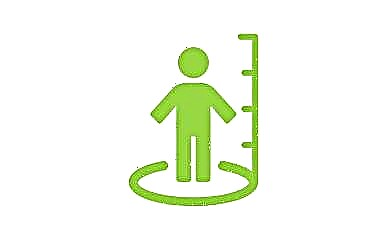The life of a baby in the first months consists mainly of sleep - it helps the baby to adapt to the conditions of the new world as painlessly as possible. In a state of wakefulness, a newborn spends only a few hours a day, awakenings are usually associated with natural needs. Gymnastics is highly recommended during these short intervals.

You need to deal with the baby very carefully.
What is exercise therapy for babies
In a newly born child, the limbs are constrained, the motor apparatus is very poorly developed. Physiotherapy (exercise therapy) for infants is necessary in order to develop and improve the functions of the limbs. Gymnastics for newborns is not prescribed by a doctor in individual cases, but is performed for health purposes.
There are practically no disputes over the need for exercise therapy for newborn babies. Gymnastics for newborns from the first days of their life cannot cause harm, especially if done correctly.
Experts confirm that gymnastics is a must for babies. After being in cramped conditions for nine months, muscle hypertonicity is almost normal and is observed in most newborns. It is for this reason that many newly born babies twitch in their sleep.

When charging, you need to talk to your child
Exercise for newborns helps to cope with muscle tension and allows the baby to develop in more comfortable conditions. With regular exercise, the benefits will be very significant:
- the child's blood circulation is activated;
- the baby will sleep and eat better;
- the work of the gastrointestinal tract is normalized;
- physical skills will begin to develop more actively;
- metabolism will return to normal.
At what age to start gymnastics
Elements of gymnastic exercises for infants can begin to be practiced immediately after discharge from the hospital. You should start with the elementary - laying out the baby on the tummy. At first, the newborn will turn the head to one side, since it is easier for him to breathe. Then the baby will try to lift the head up, trying to hold it in this position for a few seconds. This simple exercise helps to strengthen the muscles not only in the neck, but also in the back and shoulders.
Classic charging
A full-fledged classical exercise therapy for newborns is recommended to start at about one month of age. At first, it is enough to deal with the child for 10-15 minutes. It is not at all necessary to do gymnastics for newborns on a daily basis. But a certain consistency must be present. Only in this case, by the age of three months, the baby will be sufficiently trained to introduce more complex new elements into the set of exercises.
Dynamic charging
Experts recommend starting dynamic gymnastics with more complex exercises for newborns from 3-4 months. Such a charge for newborns up to a month will not work. The main movements that the dynamic type of exercise therapy uses are the rotation and swing of the child.

Exercising usually gives babies pleasure.
Important! Dr. Komarovsky recommends that parents who want to engage in dynamic exercises for babies with babies should undergo preliminary training with a specialist and carefully study the contraindications to the indicated type of physical activity.
Basic principles of conducting exercises
Gymnastics for babies is a specific activity that requires some preparation and compliance with safety rules.
Training
Preparation for exercise therapy for newborns presupposes, first of all, the physical readiness of the baby for certain loads. While doing even the simplest exercises, you should carefully observe how the child reacts. If it is difficult for a baby to cope with a particular exercise, he will make it clear.
Safety regulations
Safe and truly beneficial gymnastics for babies involves following these simple rules:
- Exercise should be done 50 minutes before or after a similar amount of time after feeding.
- Any exercise should be done very carefully and smoothly.
- Classes must be carried out systematically.
- Increase the load and charge duration gradually.
- While charging for babies, it is necessary to maintain contact with the baby: smile and talk.
How to do exercises correctly
Most gymnastics exercises for infants 1 month and older are developed by specialists taking into account many significant factors, therefore, to observe positive dynamics, it is important to do everything right.
Exercise "Frog"
To perform this exercise correctly, the infant is placed on the parent's back. Next, the adult takes him by the legs in the lower leg area (the palms should cover the baby's knees) and makes several flexion movements. Then the legs are spread with the knees outward on the sides, as a frog does. You can also lay the child on his stomach, grab the feet and press lightly, spreading the legs to a similar position. The exercise can be performed while doing gymnastics for a month-old baby.
Exercise "Embryo"
The correct way to do the Embryo exercise exercise for babies is as follows. The arms are connected to the child on the chest and the bent legs are pulled up to the tummy. At the same time, the feet are connected, the knees are bred, the head is tilted to the chest. It is important to hold the head with one hand and the child's limbs with the other. In the resulting pose, which resembles that of an embryo, the baby is swayed in various directions. This exercise is perfect for gymnastics for babies 1 month old.
Other exercises
There are still simple exercises that parents can perform with their babies practically from the very infancy, for example, "Postovoy". As part of its implementation, the child is placed on his tummy and, standing behind, take him by the shoulders. It is necessary to support the baby in such a way that he can hold on to his elbows for several seconds. After that, the shoulders of the baby need to be spread apart. The child will begin to try to lift the head up. Doing this exercise for infants will prepare the infant's neck muscles to hold the head on its own.
The exercise "Bicycle", known to many mummies, delights most babies. It is performed in the supine position. The child needs to be taken by the legs and alternately bring them towards the tummy.
Fitball exercises
Gymnastics for babies should include fitball exercises. On it, you can swing the child on his tummy or spring back and perform other simple exercises. The most important thing is to cover the fitball with a soft-touch cloth before charging for babies so that the baby feels as comfortable as possible.

Fitball is very useful for babies
Selection of a comprehensive program
Charging will be beneficial if the development of its program is thoughtfully approached.
From the first days
When the child was just brought into the house after the hospital, or he was only a week old, it will not take much time to develop a set of exercises. A light massage without pressure and gentle stroking touches will be enough.
In 1 month
In one month to light stroking it is worth adding "Frog" and other exercises that strengthen the muscle group responsible for keeping the baby's head.
At 2 months
A set of exercises for two-month-old babies is recommended to be supplemented with exercises that promote crawling.
At 3 months
At three months of age, children become more emotional and respond to actions performed with them. At this stage, you can slightly complicate and diversify the set of exercises. During gymnastics, sing or tell the child rhymes.
Duration of gymnastics
A child who is not yet a year old, despite his activity, gets tired very quickly. Therefore, exercise with him should not be longer than 10-15 minutes, regardless of age.
How many times a day to spend
Physical exercise with a child is allowed several times a day, but it is recommended to start with one. However, with a very small child, a number with frequent activities simply will not work - he mostly sleeps in the first month of his life.

Regular exercise therapy is a guarantee of baby's health
Contraindications to exercise
Despite all its positive aspects, exercise can be not only beneficial, but also harmful for an infant. Contraindications may be as follows:
- increased body temperature;
- rickets;
- strangulated hernia;
- congenital heart disease;
- pustular and inflamed skin diseases;
- infectious processes;
- the presence of some birth injuries.
If in general the baby is healthy, cheerful and cheerful, additional physical activity will not do him any harm, only benefit.



